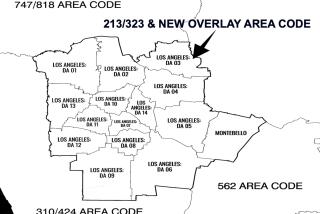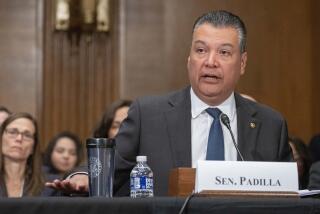PUC Could Learn From Maryland’s Experience
Overlay plans may be “in the works” for “many major cities nationwide” [“State Regulators Suspend Debut of 424 Area Code in 310 Region,” June 25], but full-service overlays have been up and running for two years in Maryland, where there have been no delays, no shortages of telephone numbers, and no one has been forced to take on the needless expense of changing telephone numbers.
Maryland was a single area code state until 1991, when, in order to save the old 301 in the Maryland suburbs of Washington, the new 410 was imposed on Baltimore, one of the biggest cities in the country, and Annapolis, the state capital.
Perhaps it was because of that trauma that, when additional area codes were needed, the Maryland Public Service Commission mandated overlays, not wanting to repeat the costly and disruptive experience.
In complete contrast, utilities regulators in Illinois, Michigan, New York, Washington state and California have stood in the way of overlays, requiring such mini- and micro-splits as now seen in the Los Angeles area.
The old telephone monopolies, Pacific Bell and GTE, with their century of experience in growing the telephone numbering system to meet expanding needs, requested a two-stage overlay for 562 here, starting in September 1995, over the old 310 area, including Long Beach and Whittier, then expanding two years later, in September of ‘97, to cover 818 and 213. With a similar overlay of 949 on 714, no one in this area would have had to change their phone number. As additional area codes were needed, they could have been added as easily as new prefixes have been added to local telephone exchanges for decades.
If Assemblyman Wally Knox [D-Los Angeles] is right in describing Los Angeles as “the world headquarters of area code chaos,” blame it on the California Public Utilities Commission.
THOMAS D. BRATTER
Los Angeles
More to Read
Sign up for Essential California
The most important California stories and recommendations in your inbox every morning.
You may occasionally receive promotional content from the Los Angeles Times.










